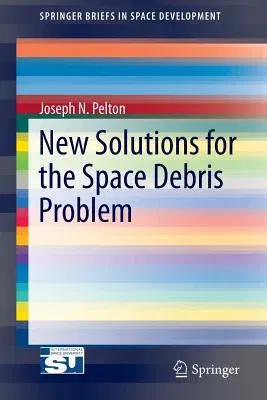Joseph N Pelton
(Author)New Solutions for the Space Debris Problem (2015)Paperback - 2015, 20 May 2015

Qty
1
Turbo
Ships in 2 - 3 days
In Stock
Free Delivery
Cash on Delivery
15 Days
Free Returns
Secure Checkout

Part of Series
Springerbriefs in Space Development
Print Length
94 pages
Language
English
Publisher
Springer
Date Published
20 May 2015
ISBN-10
331917150X
ISBN-13
9783319171500
Description
Product Details
Author:
Book Edition:
2015
Book Format:
Paperback
Country of Origin:
NL
Date Published:
20 May 2015
Dimensions:
23.39 x
15.6 x
0.56 cm
Genre:
Law Studies
ISBN-10:
331917150X
ISBN-13:
9783319171500
Language:
English
Location:
Cham
Pages:
94
Publisher:
Weight:
163.29 gm